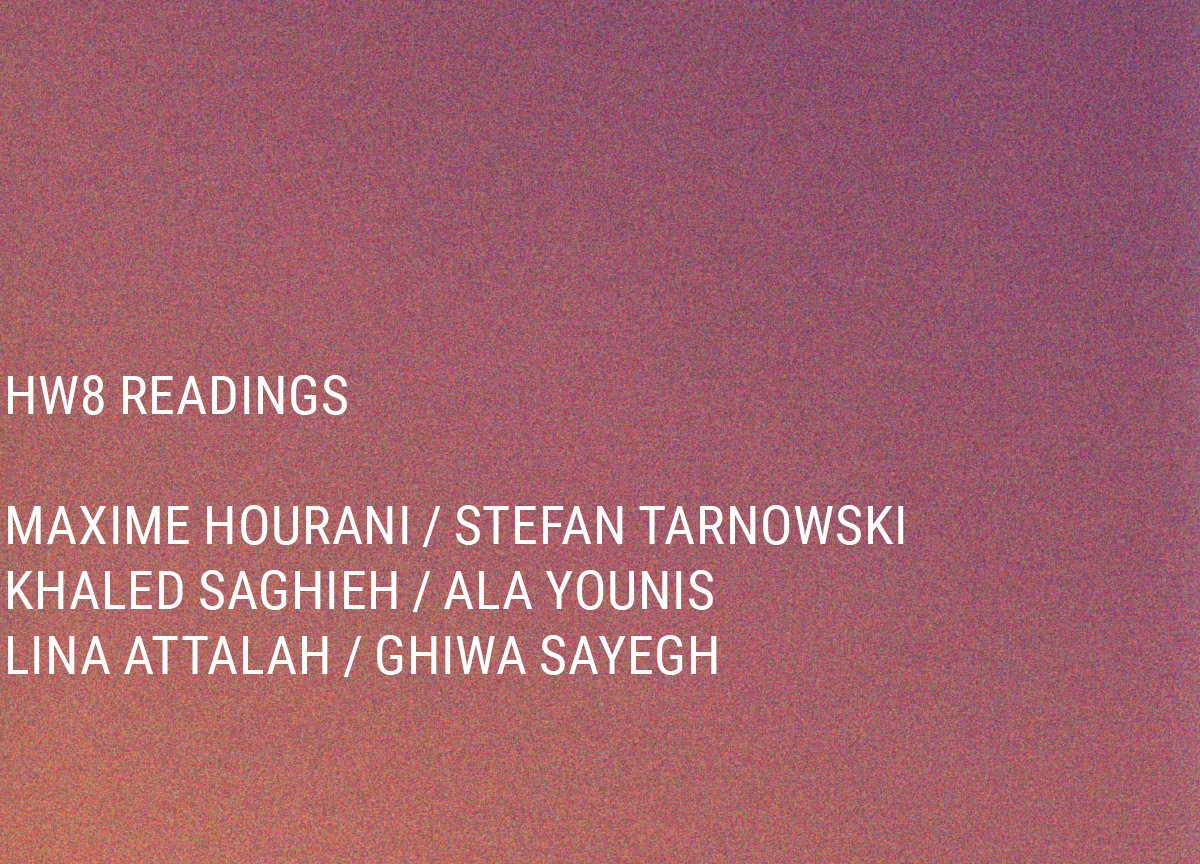Saturday, October 26th, 2019 | 5:00pm at Sursock Museum
Tripoli-Homs: Route 74 by Khaled Saghieh
The author hypothesizes: What if the revolution never occurred? He is then led to replay his own life, revisiting events that stormed Tripoli, where his paternal grandfather migrated, and Homs, where his maternal grandfather was born and assassinated. This intervention takes place somewhere between the two cities—between the old and the new city, between the real and the fictional, between the author and himself, all bridged by memory, newspaper archives, and the sound of gunfire that draw borders and fates.
Khaled Saghieh is a Lebanese writer and journalist. He began his career at the Lebanese daily Assafir. He was the deputy Editor-in-Chief of the daily Al-Akhbar until 2011. Between 2012 and 2015, Saghieh worked as Editor-in-Chief of the news department at the Lebanese Broadcasting Corporation International (LBCI). Saghieh is currently teaching in the Media Studies program at the American University of Beirut, and completing a collection of autobiographical essays.
Battles in a Future Estate by Ala Younis
In 2006, US military intelligence cameras recorded the movement of its soldiers during the Battle of Haifa Street in Baghdad, Iraq. While soldiers were breaking into the apartments of high-rise buildings or hiding behind arches, the contemporary landmarks of the city appeared in the backdrop of streets where Iraqi fighters were stationed. The houses that were broken into were never put on display before that year, although their respective architectural plans had been featured in international magazines during the period in which architecture firms were designing them in the eighties. Today, pictures of these houses can be found in many real estate websites, allowing us to imagine the price of owning an apartment in a slowly-recovering Baghdad. Through this reading, artist Ala Younis’s interest is arranged between separating military images from architectural ones, understanding the buildings’ architectural origins, (re)creating a connection to the city, and attempting to historicise the fragmentation that informs all testimonies related to manufacturing the history of architecture, war, and real estate, as well as processes of return and revival.
Ala Younis is an artist trained as an architect in Amman. Research forms a big part of her practice, as do curating, collaboration, film, and book projects. Her projects deal with collective experiences that collapse into personal ones, and with how the archive plays on predilections and how its lacunas and mishaps manipulate the imagination. Her work has been featured in shows in Amman, London, Seville, Sharjah, Dubai and New York, and as part of Home Works: A Forum on Cultural Practices, Beirut; the Istanbul and Gwangju Biennials; and the New Museum Triennial, New York. Her work Plan for Greater Baghdad (2015) premiered at the 56th Venice Biennale. In 2013, she curated Kuwait’s first national pavilion at the 55th Venice Biennale, and co-founded the publishing initiative Kayfa ta. She is a member of the Advisory Board of Berlinale’s Forum Expanded and the Academy of Arts of the World, Cologne. She co-curated How to Reappear: Through the quivering leaves of independent publishing at Beirut Art Center in 2019.
This event is part of Home Works 8: A Forum on Cultural Practices.









